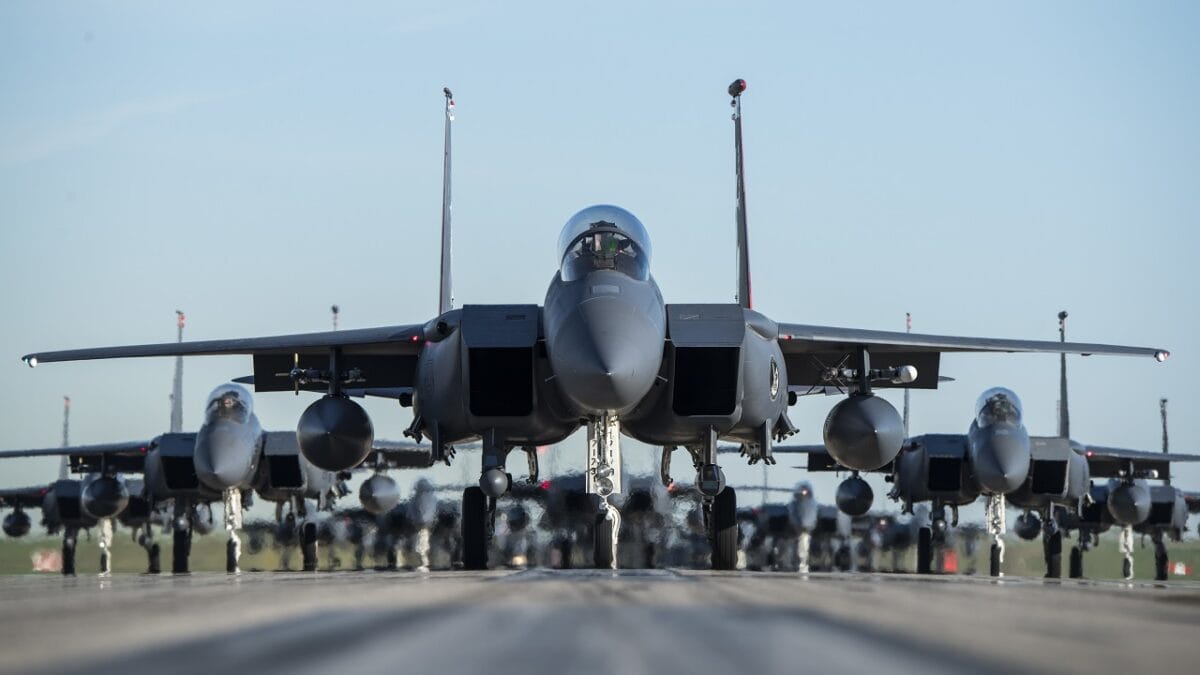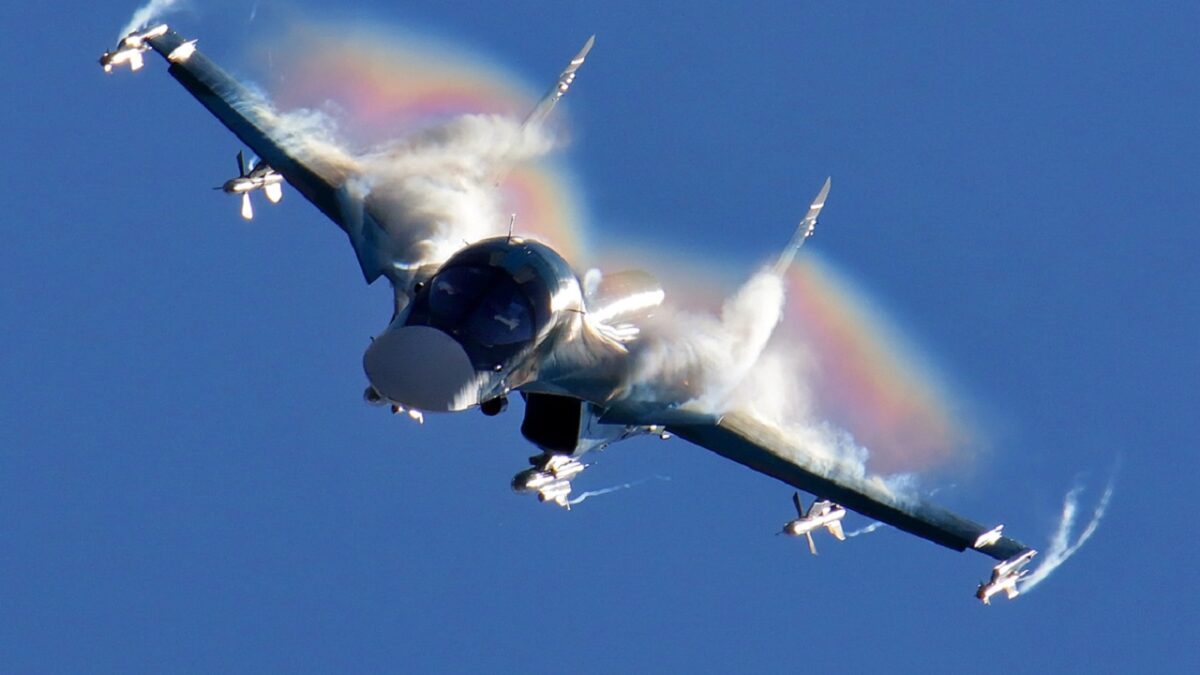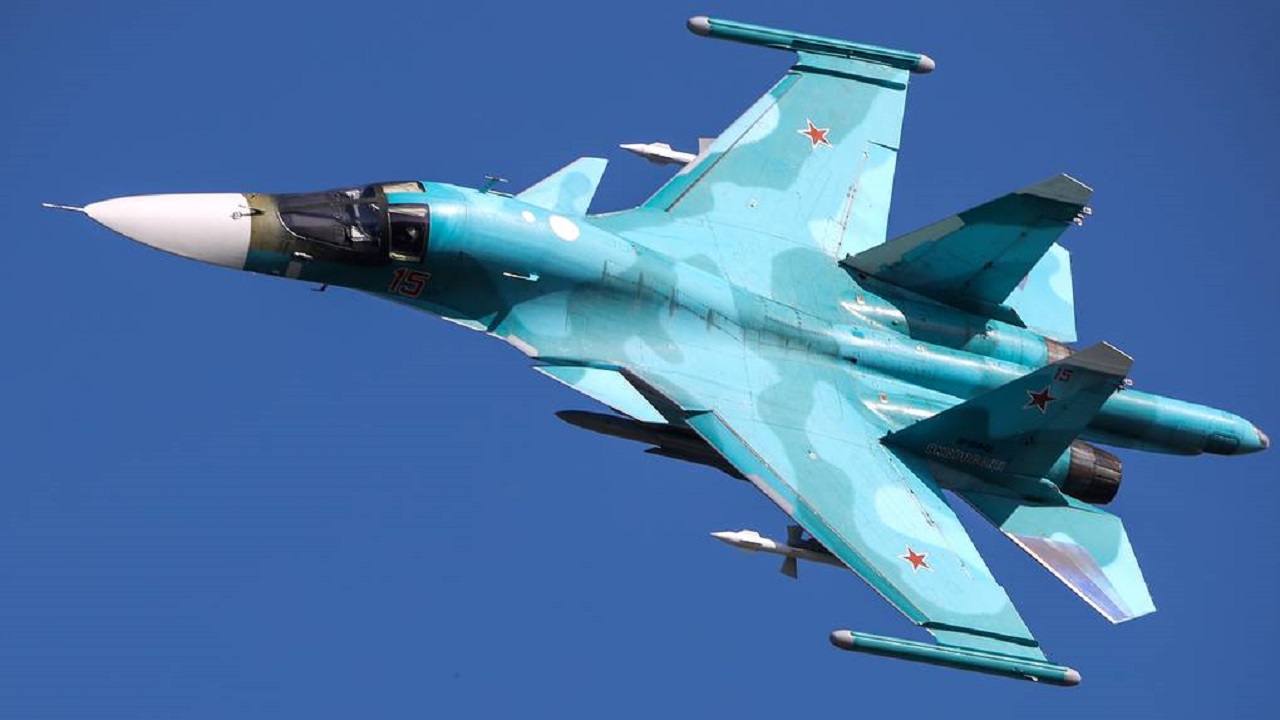Russia took delivery on a handful of advanced Su-34M fighter bombers late last month, and one has already been shot down over Ukraine. It wasn’t Ukrainian forces who managed to down the twin-seat jet, however… It was Russia’s own air defenses.
Over the weekend, video emerged of Russian forces downing a jet operating over Eastern Ukraine, though at the time, it was unclear exactly what type of aircraft they had intercepted. The footage was uploaded to Telegram by a Russian war correspondent with a history of being sanctioned by foreign nations for spreading disinformation and propaganda on behalf of Moscow.
“Last night, the air-defense crew of the allied forces destroyed a target in the sky over Alchevsk,” Yevgeny Poddubny, a Russian war correspondent and known propagandist, wrote with the video he uploaded.
“The nature of the target is not clear. The burning ball fell to the ground for more than a minute.”
The one-minute video shared on July 17 shows a bright light emanating from above the clouds, accompanied by a thundering crash. Shortly thereafter, a fireball can be seen falling from the sky.
It wasn’t long before the wreckage of the aircraft was located, and upon inspection, it soon became apparent that it was actually one of just ten or fewer Su-34Ms in existence, with a registration number of RF-95890.
These jets, which Russian media refers to as 4++ generation fighters-bombers, were just delivered to the Russian air force late last month, fulfilling the beginning of an order placed in May of 2020.
The only nation that operates these fighter-bombers, of course, is Russia themselves.
Russia received its first Su-34Ms only weeks ago and has fewer than 10 total
In June of 2021, Russian media outlet Tass reported that the nation would receive eight updated Su-34M fighter bombers by the end of the year. It wasn’t until July 8 of this year that Russia inducted the first operational Su-34Ms into service.
To date, it appears Russian Aerospace Forces have received no more than ten total aircraft.
The Sukhoi Su-34, NATO reporting name Fullback, has been under development for literally decades, with the design concept first floated as a replacement for the Su-24 Fencer as far back as 1977. Like many modern Russian fighters, the Su-34 was based on the Su-27 Flanker—an air superiority fighter designed to compete with the likes of America’s 4th-generation dogfighters like the F-14 Tomcat and F-15 Eagle. It first flew 32 years ago, in April of 1990, but didn’t enter service until as late as March of 2014.
The Su-34 may have air superiority roots, but its design was changed dramatically to better suit an attack role. It can carry up to 17,630 pounds of ordnance across 12 hardpoints located underwing and beneath the fuselage, alongside a 30mm GSh-30-1 internal cannon. A pair of Russian AL-31FM1 engines provide 30,000 pounds of thrust each under afterburner, giving the aircraft a top speed of Mach 1.8 and a service ceiling of around 56,000 feet. The Su-34M is said to improve upon these figures while integrating a synthetic aperture radar, camera pod, and UKR-RT electronic intelligence (ELINT) pod for improved situational awareness.
In some ways, the Su-34 could be compared to America’s F-15E Strike Eagle, as an air-superiority fighter turned fighter-bomber, though in practice, its design takes a different approach.

F-15E Strike Eagles taxi into formation June 12, 2019, at Mountain Home Air Force Base, Idaho. This was a rare opportunity to capture the Gunfighter family, including the 391st, 389th and 428th Fighter Squadrons, before a morning flight. (U.S. Air Force photo by Staff Sergeant Jeremy L. Mosier)

Russia’s Su-34 fighter-bomber. Image Credit: Creative Commons.
The Su-34 diverged most dramatically from its Su-27 predecessor in the nose, with a new forward fuselage designed to allow the aircraft’s two-person crew to sit side-by-side, rather than one in front of the other. The resulting design was so unique it earned the aircraft nicknames like “Hellduck” and the “Platypus.” A pair of canards sourced from the Su-30 mounted toward the rear of the cockpit further adds to the Hellduck’s unusual aesthetic.
In 2020, the Russian Aerospace Forces placed an order for 76 updated Su-34Ms at a rate of 14 aircraft per year through 2027. Each of these modernized fighter-bombers sets Moscow back about $50 million, thanks in no small part to upgraded avionics, radar, and communications systems and electronic warfare capabilities. Considering the Russian Defense budget is less than a tenth the size of America’s, losing such an expensive aircraft to friendly fire is a serious setback.
Russia has lost at least 35 fixed-wing aircraft over Ukraine, but likely more than 200
Conservative estimates of Russian losses of fixed-wing aircraft throughout their invasion of Ukraine are as low as 35, with sites like Oryx tallying confirmed photographic losses of identifiable platforms to determine that figure. Ukrainian officials, however, offer a significantly higher count, soon to exceed 220. While this may sound like a wide disparity, Oryx themselves highlight the fact that actual losses are almost certainly significantly higher than they report, due to their strict requirements for photographic evidence.
“This list only includes destroyed vehicles and equipment of which photo or videographic evidence is available. Therefore, the amount of equipment destroyed is significantly higher than recorded here,” Stign Mitzer explained for Oryx.
Among the confirmed losses are at least 11 other Su-34s, though none of the previous losses were of advanced Su-34Ms. Earlier iteration Su-34s are often valued at between $35 and $40 million, making their losses similarly difficult to swallow for the increasingly cash-strapped Kremlin.
To date, Russia has failed to secure air supremacy over the embattled Eastern Ukrainian front, which may be largely attributed to Russian military doctrine placing little emphasis on air superiority. Russian forces have long based their doctrine on a potential conflict with NATO, and because Russia felt securing air dominance in such a conflict would be unlikely, they’ve shifted their approach to combat to simply attempting to control the airspace immediately around their forces and objectives and nothing more.
However, despite Russia’s setbacks, Ukraine still has a grueling fight ahead with no clear path to victory yet to materialize.
Alex Hollings is a writer, dad, and Marine veteran specializing in foreign policy and defense technology analysis. He holds a master’s degree in Communications from Southern New Hampshire University, as well as a bachelor’s degree in Corporate and Organizational Communications from Framingham State University. This first appeared in Sandboxx.

